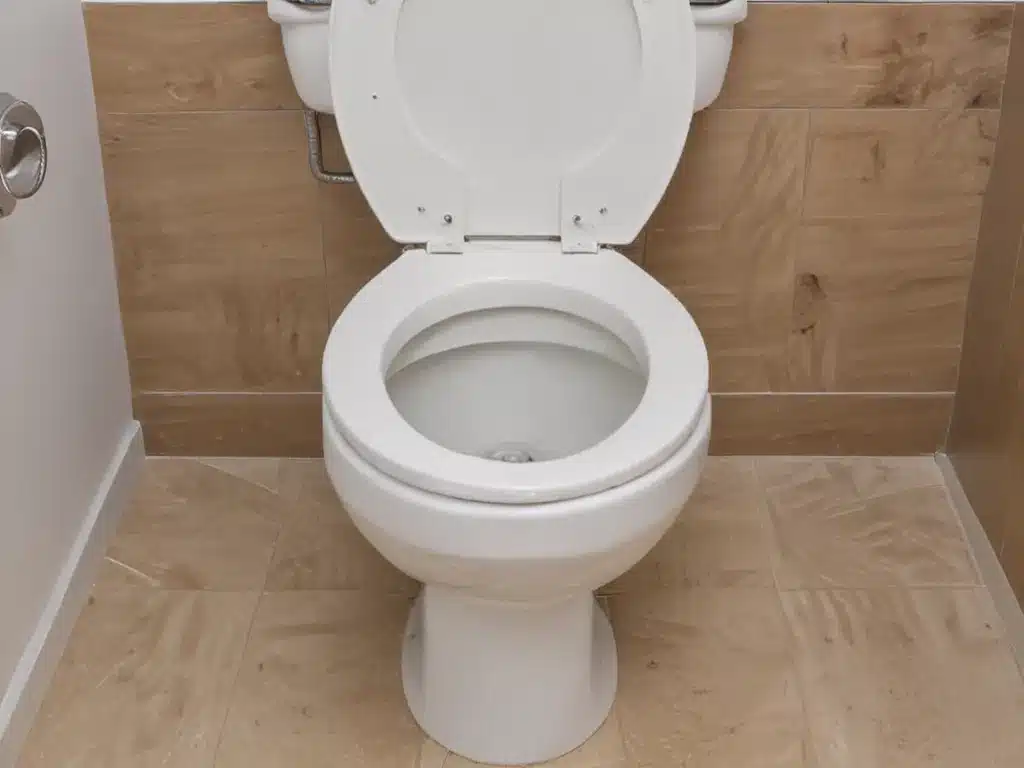Introduction
Having a clogged toilet is one of the most frustrating problems in the home. Not only is it unsanitary, but the smell can quickly become unbearable. Fortunately, there are several DIY methods I’ve learned over the years to unclog a toilet and remove stains. In this article, I will share my top tips for solving clogged toilet issues quickly and easily.
Preventing Clogs
Prevention is the best medicine when it comes to clogged toilets. Here are some tips to help avoid clogs in the first place:
Use a Toilet Plunger Regularly
I try to plunge my toilet once a month to keep everything flowing properly. This helps dislodge any buildup before it has a chance to cause a full clog.
Avoid Flushing Certain Items
I never flush baby wipes, paper towels, feminine products, dental floss, or any other non-toilet paper item down the toilet. These can easily get stuck and cause major clogging issues.
Install a Toilet Brush
A toilet brush is useful for scrubbing the bowl regularly to prevent buildup. I use mine every couple of days to keep the bowl clean.
Unclogging a Toilet
Even with preventive measures, clogs still happen occasionally. Here are some of my go-to methods for unclogging a toilet:
Use a Plunger
My first step is always to grab the plunger and try a few good plunges. Place the plunger over the drain hole and plunge vigorously several times. This creates suction that can dislodge the clog.
Try a Toilet Auger
If plunging doesn’t work, a toilet auger (sometimes called a plumber’s snake) can reach deeper into the drain. Feed the auger down the toilet and twist to break up the clog. Slowly pull back out to remove any dislodged material.
Use a Closet Auger
For stubborn clogs, a closet auger that feeds through the toilet trap can provide even more power. This tool requires removing the toilet tank lid but is very effective.
Baking Soda and Vinegar
An easy homemade drain cleaner is baking soda and vinegar. I pour 1 cup baking soda down the toilet, followed by 1 cup vinegar. After letting it fizz for a few minutes, I flush with hot water.
Chemical Drain Cleaners
There are several commercial drain cleaning products available if other methods fail. I read directions carefully and never mix chemical products.
Removing Toilet Bowl Stains
Even after the clog is cleared, stains may remain. Here are some DIY stain removal techniques:
Baking Soda and Scrubbing
Sprinkling baking soda directly onto stains and scrubbing with a toilet brush is my first stain removal tactic. The abrasiveness of the baking soda cleans effectively.
Vinegar Soak
For set-in stains, allowing pure white vinegar to soak for an hour or two before scrubbing can help lift discoloration. I may even let it sit overnight for bad stains.
Pumice Stone
Using a pumice stone directly on the porcelain can quickly scour away rust, limescale, or hard water stains in the toilet bowl. It won’t harm the porcelain.
Bleach-Based Gel Cleaners
Gel cleaners like The Works or Kaboom cling to surfaces longer than liquid bleach. I apply to stains, let sit 15-20 minutes, then scrub and flush. It helps get rid of that stubborn toilet ring.
Hydrogen Peroxide and Baking Soda
For a non-bleach option, I mix hydrogen peroxide and baking soda into a spreadable paste. I coat stains thoroughly, let sit for at least an hour, then scrub.
When to Call a Plumber
If I try all of these DIY methods unsuccessfully, calling a professional plumber is the next step. A plumber has specialized tools and the expertise to fully unclog drains and identify any underlying issues. It’s also smart to call a plumber for any overflowing toilet situation to prevent flooding damage.
With some basic maintenance and these effective DIY unclogging and stain removal techniques, I can keep my toilet free of clogs and stains without needing to call a plumber too often. A functioning, clean toilet is essential for every household.







